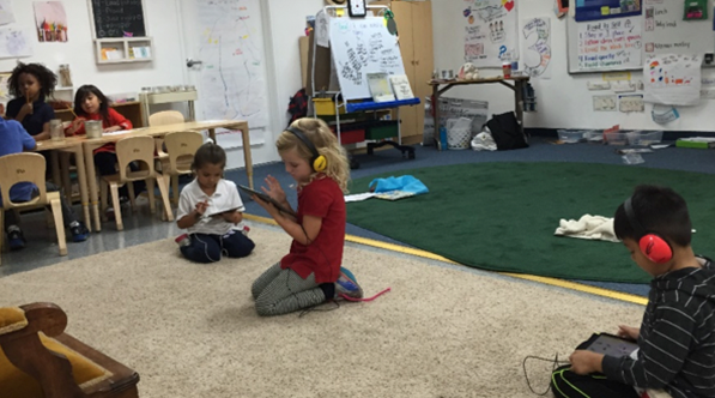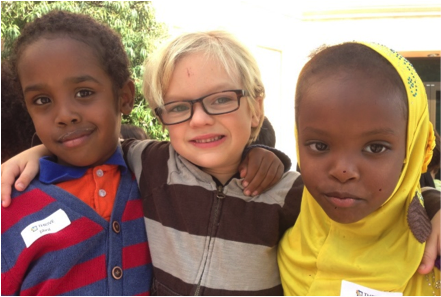New Designs for School
The Importance of Social Emotional Learning in K-12 Education
Topics

We’ve all had the experience of truly purposeful, authentic learning and know how valuable it is. Educators are taking the best of what we know about learning, student support, effective instruction, and interpersonal skill-building to completely reimagine schools so that students experience that kind of purposeful learning all day, every day.
Why is it that Thrive Public Schools feels so strongly that blended learning must be paired with social-emotional learning?
At Thrive, we believe the greater purpose of learning is not only to learn to DO, but also to learn to BE. Blended learning on its own is highly effective in growing human doings—but our ultimate goal is greater—we want to grow human beings.
Social Emotional Learning has become increasingly important in the digital age. High-quality human interactions are essential in personalizing learning. The elements that make blended learning so effective and appealing (using multiple tools, small group work, freedom, and choice) are the same reasons that blended learning must be associated with social emotional support for kids. To build the skills needed for students to thrive in a blended learning environment, we focus on Fostering Student Voice, Building Resilience, Generating Self Advocacy, and Teaching Self-Regulation. In short, socially and emotionally robust kids.
At Thrive we foster a connection between doing and being. The way you get the job done and how hard you work is just as important as the final product. And doing a good job while being a good person makes you more effective in the 21st century workplace. This is how we intentionally build a connection between doing and being:
1. Fostering Student Voice
We want students to be seen, heard and valued. Giving students a voice in decision making, learning choices and classroom community building helps us achieve all three of these goals. We have classroom meetings each morning and afternoon to build student voice into our day. Data shows that students who speak once are more likely to do so again. Morning meetings promote student voice and lead to more productive and collaborative experiences throughout the day.
Another way we foster students’ voice is though student-led conferences and presentations of learning that allow students to own their learning and showcase their knowledge while working on 21st century skills. This student voice is the very essence of Thrive Culture
2. Building Resilience
Going through difficult moments and forging on stronger than ever is an invaluable yet difficult skill that we adults even struggle with. We support students to grow their brains and character by giving and receiving feedback on work each day using a peer critique model. We focus on kind, helpful, and specific feedback and create additional opportunities for learning through struggle, revision, critique, and sometimes failure. Students gain resilience and create stronger work while taking risks and being unafraid to make mistakes. Building a fail-forward culture of risk takers, innovators and critical thinkers isn’t always easy, but making work public and celebrating learning is part of the Thrive way. When the work is real and parents, students, and community members can see that work and celebrate it, the hard work pays off!
The Story of Austin's Butterfly
3. Generating Self-Advocacy
Creating a harmonious campus depends on students understanding what they need, why they need it, AND being able to articulate that need to those around them. We use a Collaborative Discipline approach (linked to nonviolent communication) that actively teaches students to define their needs, use appropriate language, and meet the need before it becomes critical. Every action is a way for students to fulfill their needs. At Thrive we believe we can avoid crisis and conflict by listening to our bodies, minds, and hearts.
4. Teaching Self-Regulation
Developing a set of constructive behaviors and circumstances that affect a student’s learning is essential for a human’s being. We help students self-regulate by giving them learning choices and helping them create goals and action plans to improve executive functioning and academic skills. Our Personalized Learning Plans focus on both the doing and being of student life at Thrive.

In Thrive’s blended learning environment, we depend on students being good digital citizens, teachers being role models, and all of us being thoughtful communicators, collaborators, problem solvers, and visionaries. Adding the social emotional component to our blended learning paradigm is imperative to creating the human doings and the human beings we need our students to become. If you want to chat more or are looking for thought partners in your program, reach out to us! Education needs all hands on deck!




